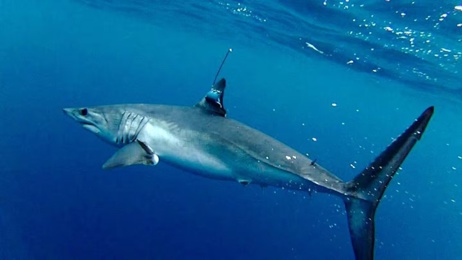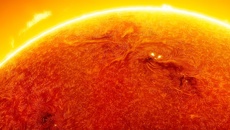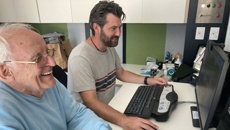It’s thought to be capable of unleashing an earthquake and tsunami large enough to kill tens of thousands and cause nearly $150 billion in damage.
Now, scientists have edged even closer to answering perhaps the most important question about our big-risk Hikurangi Subduction Zone: what controls the system’s suspected release valve.
Our largest fault zone and natural hazard is formed by the intersection of the Pacific and Australian plates beneath New Zealand, creating an endless geological scrum that produces an enormous amount of pent-up energy.
Subduction zone cataclysms like the 2011 Tōhoku and 2004 Indian Ocean disasters have shown what happens when all that energy suddenly released in “mega-thrust” earthquakes.
It’s something that could happen here too: scientists have given one-in-four odds of a magnitude-8.0 event occurring beneath the North Island within the next 50 years.
Just this month, they warned a major tsunami could kill more than 22,000 and injure nearly 26,000 - even assuming three-quarters of people could evacuate in time.
That ever-present threat has underscored the urgency of understanding the cause and role of an enigmatic but immensely influential part of the Hikurangi system: silent quakes.

The general location of the offshore part of the Hikurangi Subduction Zone.
Phenomenon called slow-slip earthquakes - able to shift faults by tens of centimetres over weeks to months, without ever being felt at the surface - are thought to act as critical release valves for built-up pressure.
Generally, it’s believed the make-up of the Earth’s crust plays a major role in how that pressure is handled.
When rocks are softer and wetter, the plates can slip slowly, but when they’re drier and brittle, they can store energy until they fail in violent mega-quakes.
Each of those geological profiles and everything in between can be found within the Hikurangi Subduction Zone -explaining why such a large range of earthquake types happen on it.
Over the past decade, it’s become a natural laboratory for international scientists eager to learn the secrets of slow-slip quakes, which may ultimately help better predict future events.
Scientists have already come to understand how fluids trapped by shifting seamounts help hydrate and weaken the subduction zone’s faults - enabling slow-slips - and that this activity tended to occur in regular cycles.
Their work has suggested a layer of impermeable rock at the top of the diving tectonic plate sealed fluid within the pores of rock layers beneath.
As this fluid built up within the seal, the pressure built to the point it triggered a slow-slip quake - which then broke the seal, temporarily fractured the rocks and allowed them to soak up fluids.
Within a few months, the rocks healed, returned to their initial permeability - and the cycle restarted.

Slow-slip events are known to be relatively common features of the Hikurangi Subduction Zone - a largely offshore margin where the Pacific plate dives - or subducts - westward beneath the North Island. Specifically, they tend to happen within areas where the subduction zone is transitioning from being "stuck" beneath the southern North Island to an area where the subduction zone is "creeping" further north, around Gisborne and Hawke's Bay. Source / GNS Science
Now, in a just-published study, scientists have demonstrated this process using rocks earlier collected from a slow-slip hot-spot, near the Hikurangi Margin.
“We are showing for the first time, using rocks that are representative of those at depth, that permeability is controlling [slow-slip events],” said the study’s lead author, Dr Nicola Tisato of the University of Texas in Austin.
Study co-author Dr Laura Wallace, the first person to record slow-slip events occurring in the margin, said the findings took us closer to putting the wider picture together.
“It adds some additional data constraints on how this fault-valve process might work, how fluid cycling could work at the subduction zone - if that’s indeed what’s driving the cyclicity of these things.”
The most tantalising possibility was eventually being able to build a convincing model that could predict earthquakes before they happened.
The US study team was now analysing rock samples from other areas of the margin to learn why slow slip happened more frequently in some places than others.
“We have to go through the exercise of understanding why in the north of the Hikurangi Margin, there are [more] slow-slips - and why in the south of the Hikurangi Margin, we have fewer slow-slips,” Tisato said.
“Because if we understand that, then we have an additional step to go towards the prediction.”
Back in New Zealand, meanwhile, GNS Science researchers have begun modelling the effects of trapped fluids on mega-thrust earthquakes all the way through to the Kermadec Subduction Zone - with plans to extend the work to the entire southwest Pacific.
Jamie Morton is a specialist in science and environmental reporting. He joined the Herald in 2011 and writes about everything from conservation and climate change to natural hazards and new technology.
Take your Radio, Podcasts and Music with you









